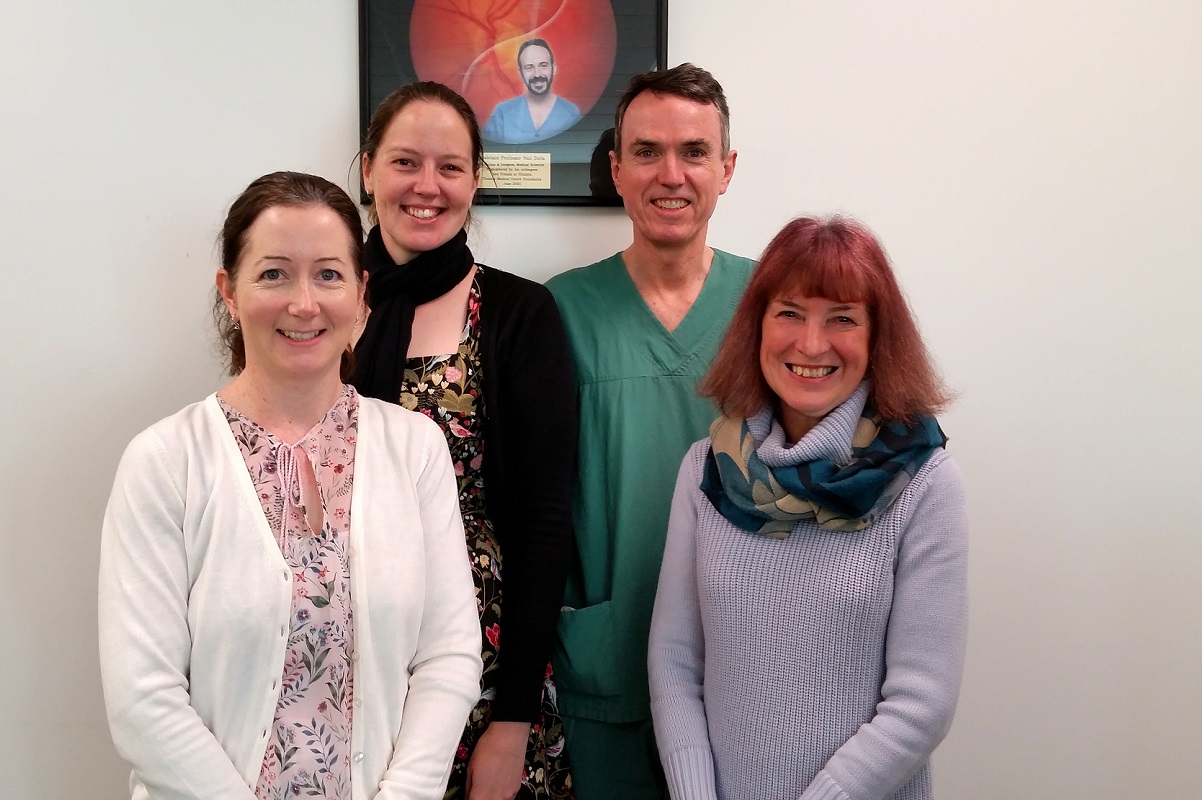
A vision-restoring procedure performed in Australia for less than ten years has been reported on in detail for the first time, with the release of the latest report of The Australian Corneal Graft Registry (ACGR). The report times with the Registry securing around $500,000 in grant funding to continue its important activities.
Flinders University’s ACGR, part of the College of Medicine and Public Health, collects national data relating to corneal transplants, including information on corneal donors, graft recipients and surgical procedures used, and analyses factors that may affect graft survival and visual outcomes.
It is an international front-runner, having collected data on more than 35,000 graft procedures since its establishment in 1985 and enabled many ophthalmology advances to be made through the information it disburses to surgeons in publications and presentations.
The Registry’s latest major report will again be examined by the ophthalmological community, including its analysis on the newer procedure of corneal grafting – called Descemet’s Membrane Endothelial Keratoplasty – where only a very thin internal layer of the cornea (clear ‘window’ section at the very front of the eye) is replaced.
Corneal damage from genetic conditions, infections or traumatic injuries is one of the major causes of blindness in Australia and the newer procedure requires fewer stitches and is often commended for potentially reduced rates of graft rejection and enabling final vision outcomes to be reached in shorter periods of time.
Flinders University Associate Professor Richard Mills, who is Medical Director of the ACGR, says despite its advantages there are aspects that can make these techniques more complex to perform, which can lead to higher rates of early failure.
“It is therefore important that both the short and long-term outcomes are documented for surgeons to weigh up the pros and cons of these surgeries for patients’ particular needs,” Associate Professor Mills says.
The ACGR was established by Flinders University Emeritus Professor Keryn Williams AC, together with fellow Flinders Emeritus Professor Doug Coster AO. It boasts a number of significant achievements – including helping to dramatically reduce the time Australians have to wait for sight-restoring transplants by overturning beliefs that cornea donors had to be young.
The pioneering Flinders University model has inspired other countries to establish similar registries, and Flinders’ data is often used in international comparative studies investigating improved corneal transplants.
Emeritus Professor Williams took a step back from the day-to-day running of the Registry following her retirement from Flinders in 2017 but she continues to provide valuable input as Scientific Director, working in conjunction with Associate Professor Mills and Dr Miriam Keane as Executive Director.
Dr Keane and Administrative Assistant Mrs Vicky Jones, who both celebrate ten years with the Registry in 2018, round out the team together with Research Assistant Ms Nora Coffey.
The Australian Government Organ and Tissue Authority (DonateLife) granted the Registry further funding of approximately $500,000 to cover its activities for another two years.

